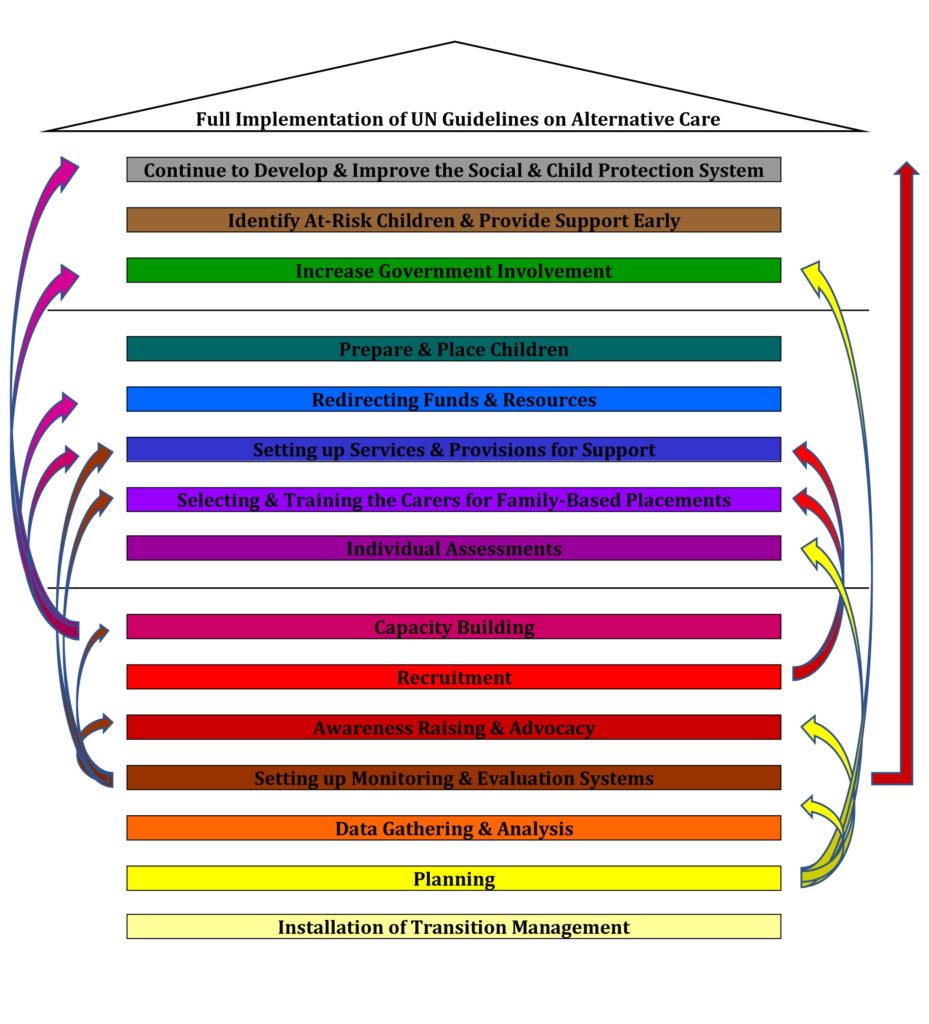Part 16 of the explanation with the ToC: Last Thursday the reasons for the need for preparation of children were explained, in this blog, some practical tips on how to help the child make a smooth transition.
Preparation should also include the acknowledgement that the time spent in the institution was significant for the child. Helping the child put together a kind of record of memories about life in the institution, taking photos with friends, caregivers and of special places that he or she can take along when going, and giving children ways to stay in touch with each other when they are separated into different placements will all help make the personal transition easier. It can also help if the child is able to bring something with him or her that was familiar in the institution. Having something known and familiar can be comforting when the child finds him- or herself in a new environment.
Children will generally not all be moved out at the same time. The period over which children start to gradually move out may stretch over several weeks or even months, depending on how things are organised. To prevent a sense of ‘being left behind’ or ‘being forgotten about’, or ‘being worthless’ in the last remaining children, there should not be a situation where just a handful of children – or even worse, a single child – remains in the institution while all others have gone. Arrangements have to be made to make sure that the last 10-20 children all move out on the same day.
When the moment comes for the child to leave the institution, it often helps if there is a small celebration, and a clear expression of the child being valued by people left behind and that he or she will be missed. The child should be taken to his or her new home by the social worker or counsellor that has worked with him or her over the past period, and who is therefore familiar. This person who escorts the child should stay after delivering the child until the child indicates that he or she is alright with them going. Doing this, rather than having the child be picked up at the institution by the new caregivers, makes the transition less abrupt and allows the child to adjust to the new situation slightly more gradually.
The time needed for proper preparation will be different from child to child. Generally speaking, very young children and children with severe intellectual disabilities – as well as children who have not left their room or even cot for a long period – will need a much longer time to get used to the idea of change. Particularly for those who have been stuck in a single room for a long time, if the preparation is not done carefully and at a pace appropriate to their needs, the psychological shock of the change might kill them.
Second Line
Like the first line, the second line is not a strict division, but it does mark the start of a new phase. The stages mentioned after the second line will start as soon as the first children are moved from the institution, which may be quite a while before the last children leave it. However, there is a division here in the sense that once the last children have left the institution, the deinstitutionalisation process is finished and the transition is over. However, working towards full implementation of the UN Guidelines on Alternative Care for Children does not begin and end with deinstitutionalisation, it is a much broader undertaking. And work on it needs to continue long after there are no children left in institutions anywhere in the world. So, the stages following the second line indicate the work waiting for you once the first children have been moved into family-based and community-based care, and that is to be continued indefinitely.

If you would like to read the explanation with the model from the very start, you can go HERE.
Please share this blog to help spread awareness.


Great!